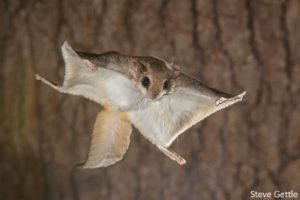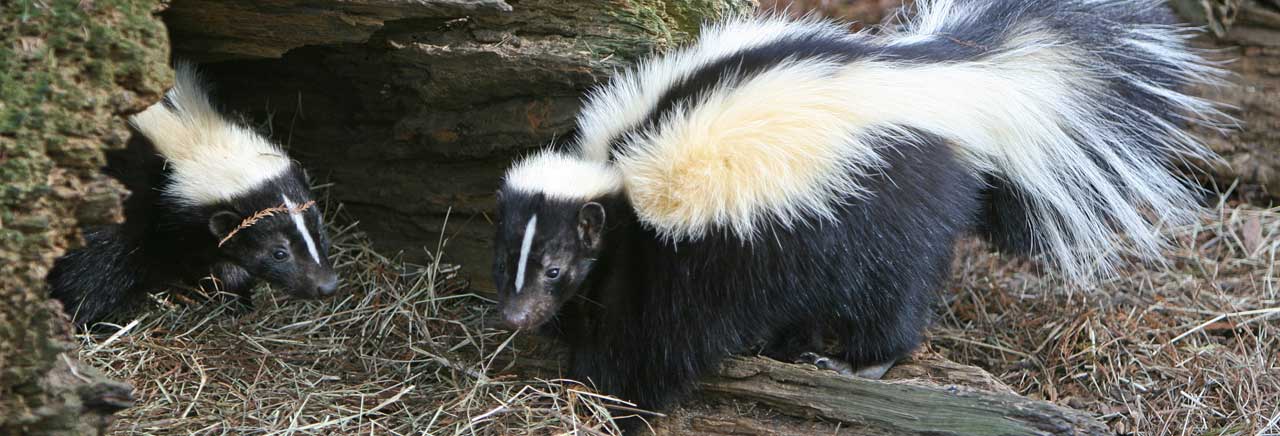
What is a Flying Squirrel?
The term “flying squirrel” is a misnomer. They don’t fly; they glide from tree to tree or other higher structures. Flying squirrels also create a lot of noise, especially inside attics.
How are they different?
Flying squirrels are very different compared to other squirrels. They have a patagium which is basically a furry-like parachute that allows them to glide. Moreover, the membrane extends from their wrists to their ankles. Their broad, flattened tail provides stability, while the limbs allow them to steer during flight.
They are much smaller than a typical squirrel. Additionally, their fur ranges from a tan to rust color and their bellies feature white fur. Because of their smaller size, their eyes appear to be more prominent.
What Do They Do?
Their diet is very similar to other squirrels. They munch on acorns, seeds, and bird eggs. At only five weeks old, gliding is practiced. By ten weeks, they are ready to explore their surroundings.
Flying squirrels launch themselves from a high branch and spread their limbs to catch air. Furthermore, their slight movements are what allow them to steer. The wide tail is used for braking during landing. Surprisingly, they glide up to 150 feet in a single launch!
As nocturnal rodents, they are also active throughout the year. They prefer to live in colonies, which can contain up to 30 squirrels! Big hollow trees shield their colonies from extreme weather. Furthermore, mature trees that provide nuts and seeds are also ideal.
Common Damage Caused by Flying Squirrels
The smallest entry points are as big as a quarter. Often, entry is found through construction gaps, dormer and louver vents, chimneys, and fascia boards. Like most rodents, they will also chew through electrical wiring and cause fires.
Flying squirrels are some of the messiest rodents. They leave black stains on walls, ceilings, and soffit panels. Moreover, droppings are a noticeable sign of entry. Furthermore, their chewing and rustling create a lot of noise. Outdoors, they strip bark from trees, dig holes, and raid bird feeders and gardens.
Removal and Exclusion
Trapping is the most effective way to get rid of flying squirrels. Due to their communal living habits, it takes the time and patience of experienced wildlife professionals. In some instances, we use one-way doors so the squirrels leave, but are unable to return.
After removal is complete, we seal all entry points and offer methods of safe clean-up. Droppings can contain a wide variety of bacteria and should be handled by a wildlife technician.
If you believe flying squirrels are living in your attic, feel free to call us or use our contact form.


